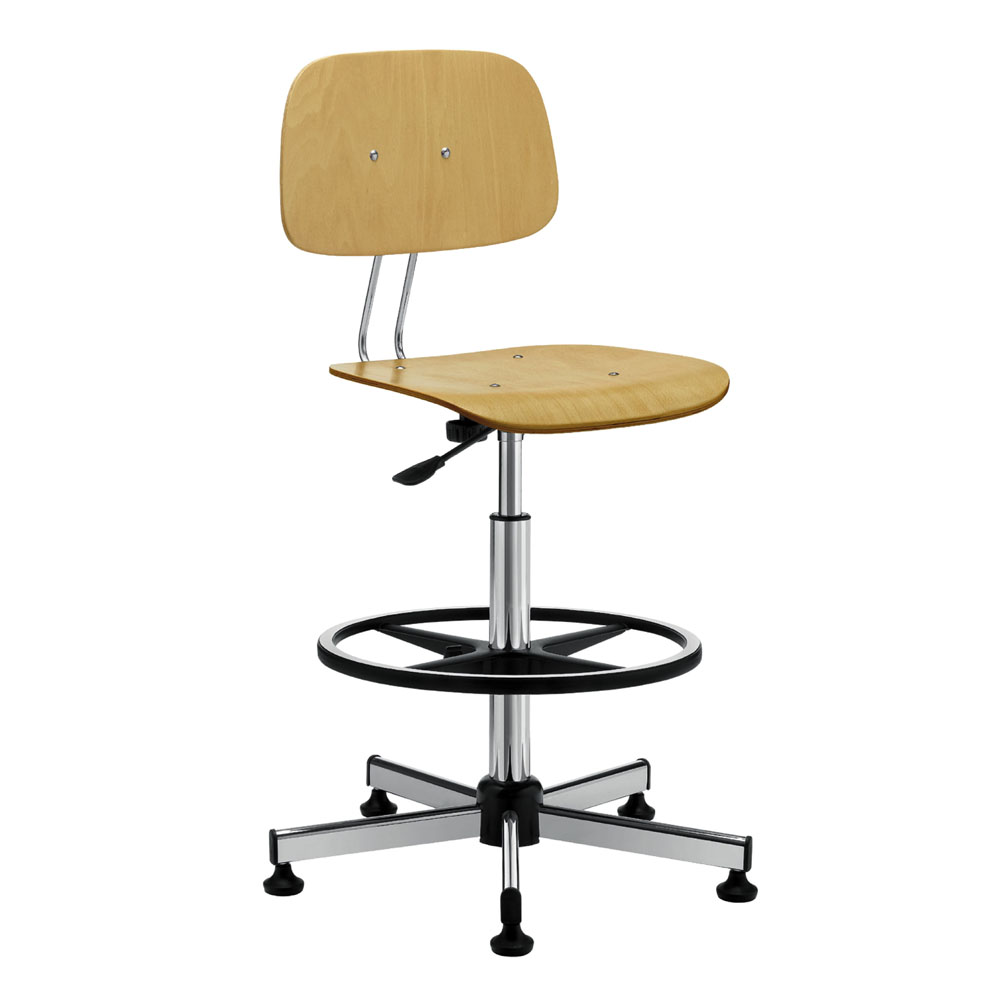The stool, unlike the classic task chair, is used to meet workers who work for many hours in an uncomfortable position: either getting up and moving continuously or staying still for a long time. This type of seat is therefore ideal, rather than for office work, for laboratory work, on work benches or on workshop counters. The characteristics that make the stool particularly suitable for this type of use are: the reduced space that this type of seat occupies, the versatility and the wide possibility of height adjustment in order to allow the different movements.
A versatile seat is crucial because some types of laboratory work require repetitive movements and characterized by static postures, while others require operations that are performed in different positions, standing or sitting. In both cases, if you do not have an adequate and well-adjusted seat, the body will be subjected to a considerable effort.
Furthermore, in these working environments, a high staff turnover often occurs: chairs and stools are used by different people or moved between different rooms and departments. This is another reason to choose the stool.
If a few years ago the work chairs were designed in an uncomfortable way because they were very static, today the focus is on the ergonomics of the stools, in order to guarantee workers a good performance and concentration inside the laboratory and to reduce fatigue due to this type of activity. Comfort and accessibility must always be priority features. The stools that will be placed inside a laboratory must also be made respecting some important hygiene rules and the main regulations regarding the dispersion of electric charges

The importance of adjusting the stool
The adjustment system will therefore be fundamental for the chairs that are inserted in a work environment such as a laboratory.
The height of the stool should be decided on the basis of the comfort of the person but also and above all on the basis of the use, movements and operations that a person will have to do in the workplace. For the same reason it will be decided to opt for a more static or for a more dynamic stool.
Static stools will not have castors and will have a very solid structure: the classic example is the stool with round seat in wood or soft material and four legs and glides. Think of a researcher under a microscope: to be able to work with precision, he will have to maintain a position as steady as possible.
Instead, more dynamic stools have an adjustable structure in each element, from the seat, to the possible backrest, from the height, to the footrest, to the rotation modes. These are highly professional chairs that are able to combine practicality and elegance with maximum freedom of movement.
As for chairs, even the work stools should be adjusted according to some basic rules, to ensure correct posture.
The height must be defined so that the feet rest on the ground, the knees are always bent at 90 ° and the depth of the seat holds up at least ¾ of the thighs. Any back and seat can be adjusted on the basis of the inclination, to obtain the most comfortable posture.
